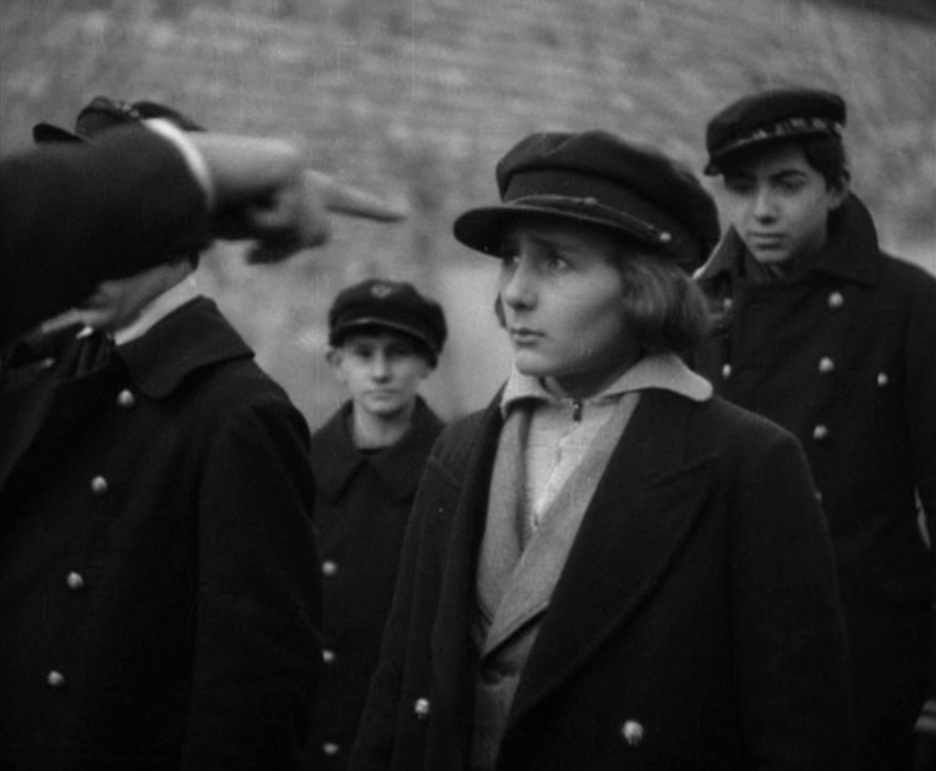Zero For Conduct

Zéro de conduite
Jean Vigo
France – 1933

Screenplay: Jean Vigo
Cinematography: Boris Kaufman
Production: Franfilmdis Argui-Film
Language: French
Duration: 41 min
Color: Black and White
Synopsis: At a strict French boarding school life is a constant power struggle between the student body and the staff. The friends Caussat, Bruel, Colin, and the sensitive Tabard, are particularly raucous and frequently receive grades of “zero for conduct.” The boys’ ill behaviour is a direct response to the authoritarian, bigoted, and corrupt demeanor of the senior staff, particularly the head master, and the dorm supervisors. The one exception among the teachers is Huguet, newly appointed at the school, who from time to time likes to imitate Charles Chaplin to lighten the mood in the classroom. Fed up with rigid, ineffective rules, the boys decide to take over the school on Commemoration Day. After ransacking their dormitory they barricade themselves in the attic, from where they raise their ‘scull and bones’ flag of victory. Now, during the celebration open house, they have prepared a special surprise for the guests and dignitaries visiting their esteemed institution of learning.
Notes: Refused a certificate by the French Comité national du cinéma (Film Control Board) on the grounds that its satirical attack on the education system was seditious, Jean Vigo’s Zéro de Conduite (1933) would not be screened commercially in France until 1945, 11 years after the director’s death at age 29.
Vigo was known for his belief in a “social cinema” that demanded the filmmaker take a position. This social vision is evident throughout Zéro de Conduite, not only in terms of its story and style, but also its mode of production, which in many ways anticipated Italian Neorealism. Vigo spotted his young ruffians, the centerpiece of the film, on the street, followed them home, and asked their parents for their cooperation. The film’s instructors and headmasters were mostly friends and acquaintances of Vigo’s. The action was improvised to such an extent that some who worked on the production worried about the increasingly boisterous behavior of Vigo’s pack of lads. Simply put, this film is a natural for the college classroom. Vigo and Kaufman’s surreal documentary style offers an alternative to the conventions of narrative cinema. Boris Kaufman, who shot all of Vigo’s films, was Dziga Vertov’s brother, and some critics have detected a connection to Russian formalism in Vigo’s opening train ride sequence, which possesses a rhythmic choreography that, like Vertov’s Man with a Movie Camera, situates the romantic observer within the industrial age. Maurice Jaubert scored the film, freely exploring sound as an uncanny rather than a realistic element. At times, a chorus of boy’s voices intrudes into the soundtrack without any anchoring image.
Eventually, Vigo’s small body of work would earn recognition as a precursor to poetic realism and the Nouvelle Vague. The prestigious Prix Jean Vigo would be awarded to independent filmmakers Alain Resnais, Jean-Luc Godard, Ousmane Sembène, and Noémie Lvovsky among many others. Zéro de Conduite would be quoted in many subsequent works by filmmakers such as François Truffaut, Lindsay Anderson, Louis Malle, Peter Weir, and Wes Anderson.
Notes adapted from Pramaggiore, Maria. “Zéro de conduite: Jeunes diables au collège (Zero for Conduct).” Quarterly Review Of Film And Video 27, no. 5 (October 2010): 413-415.


